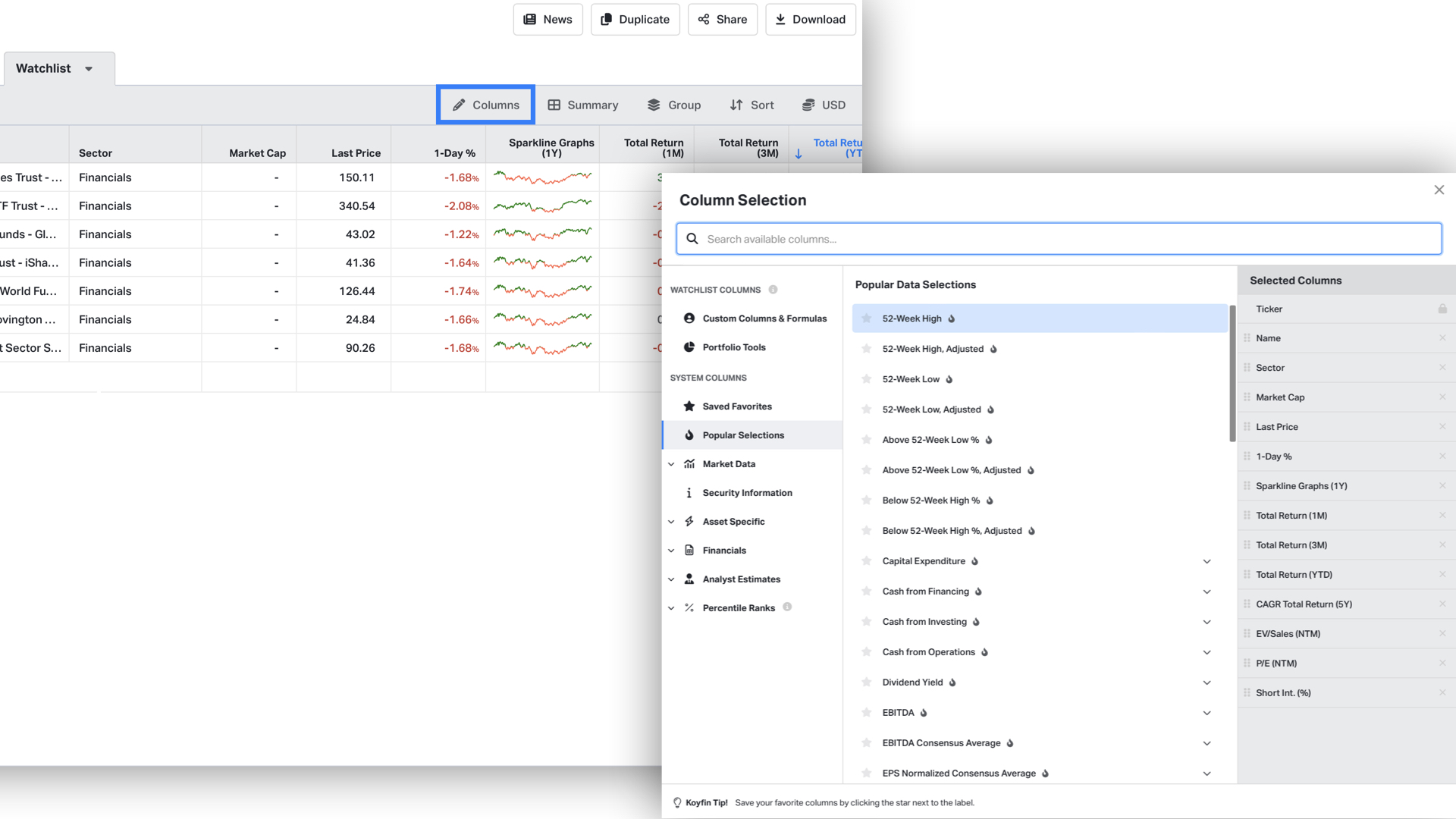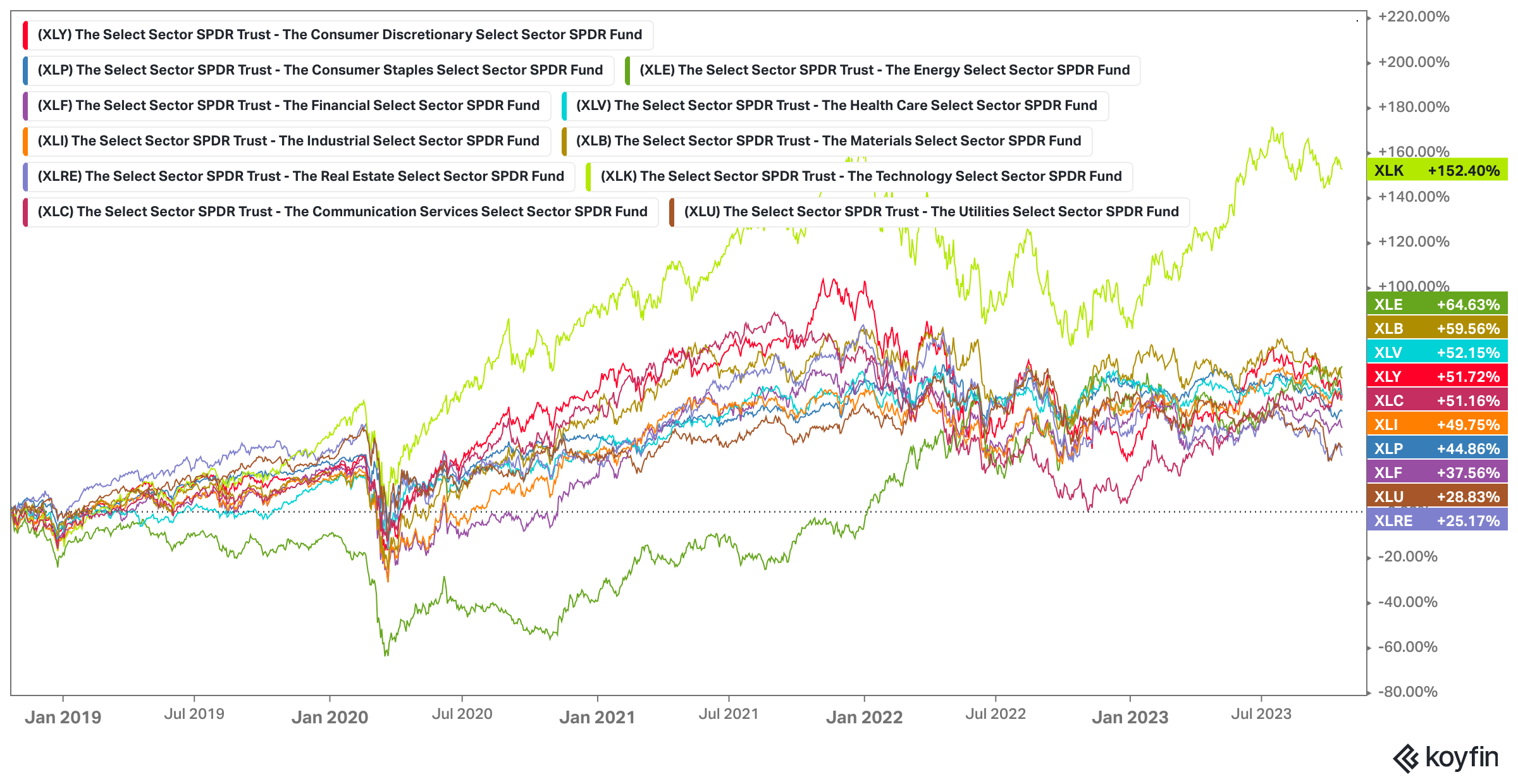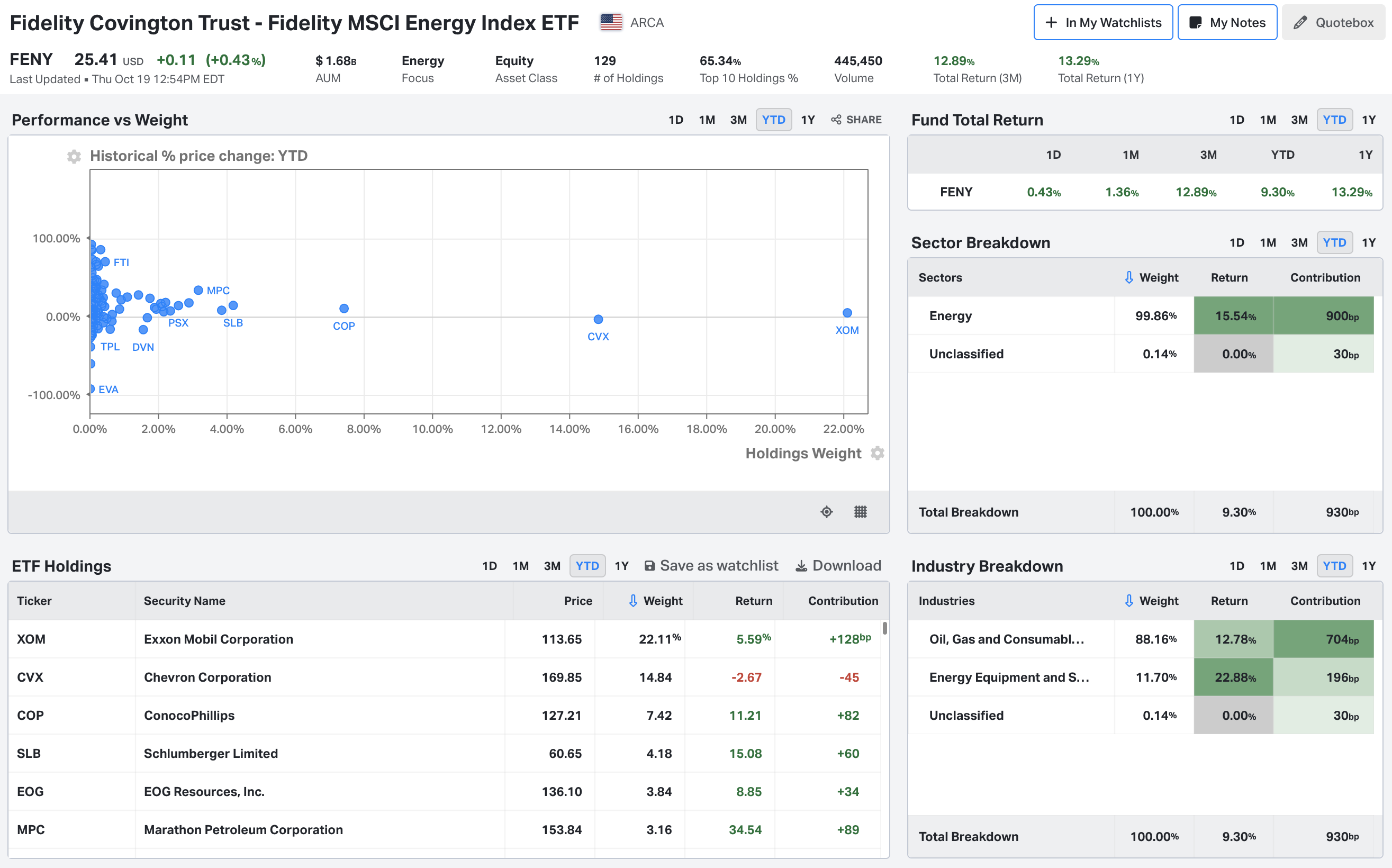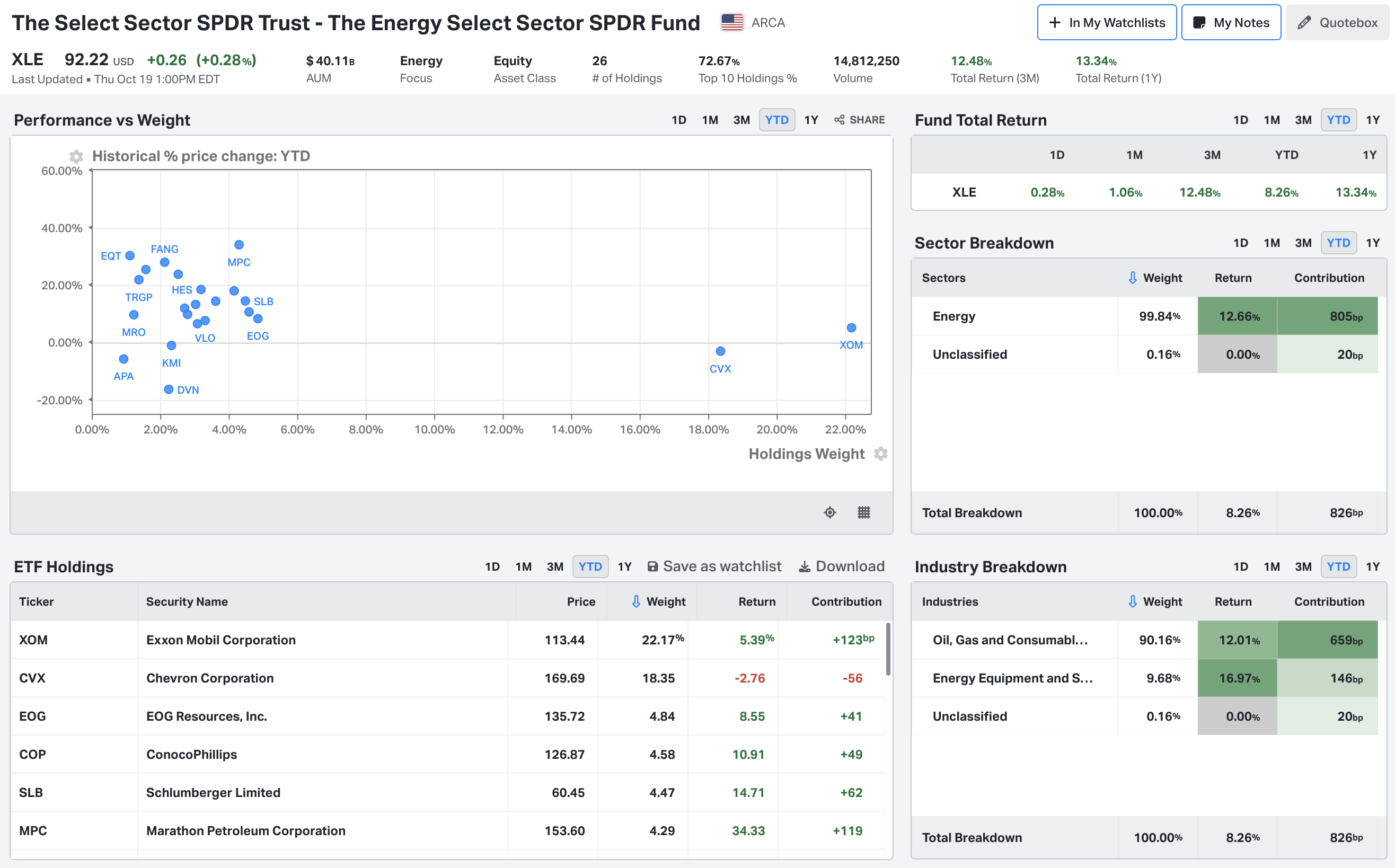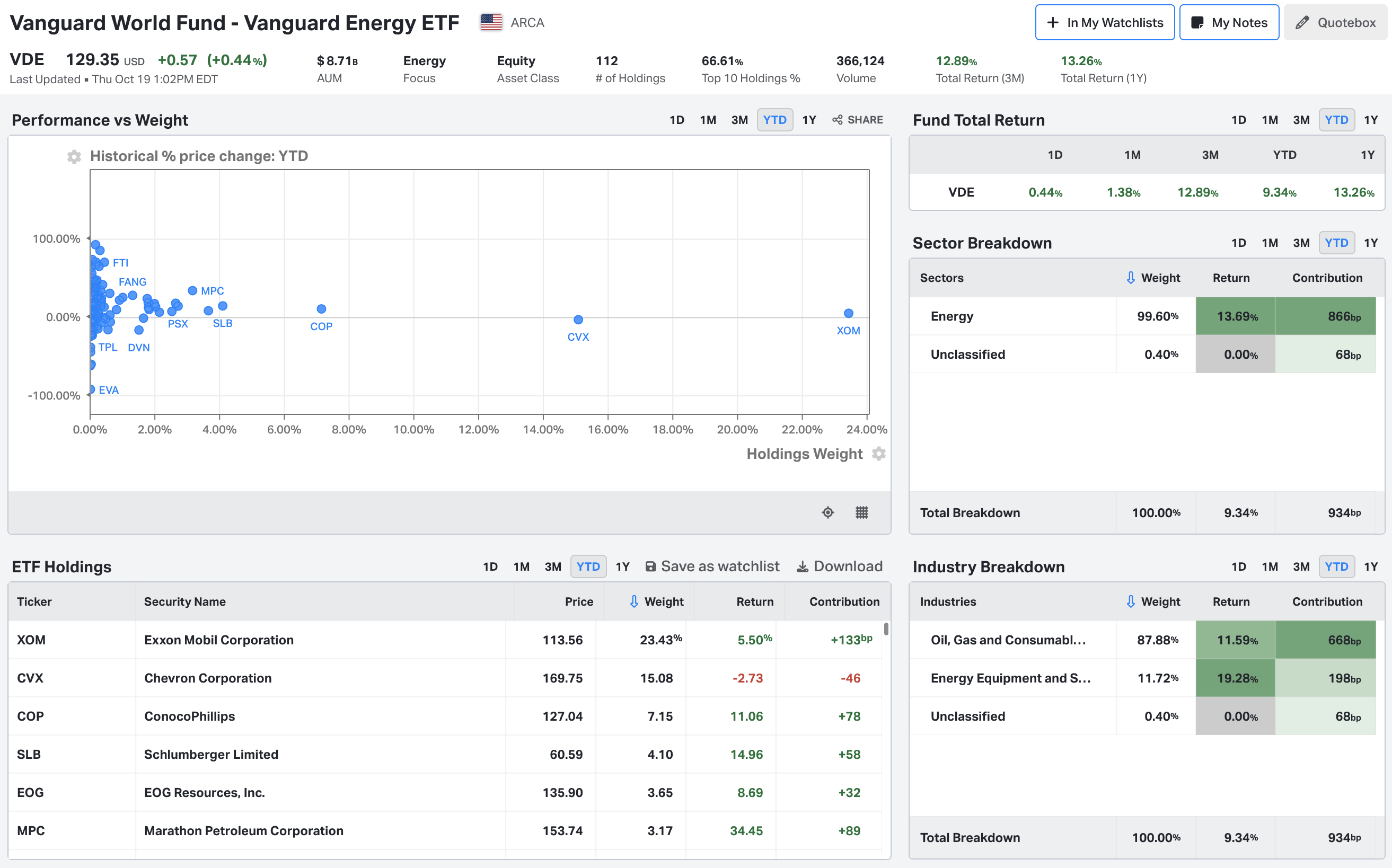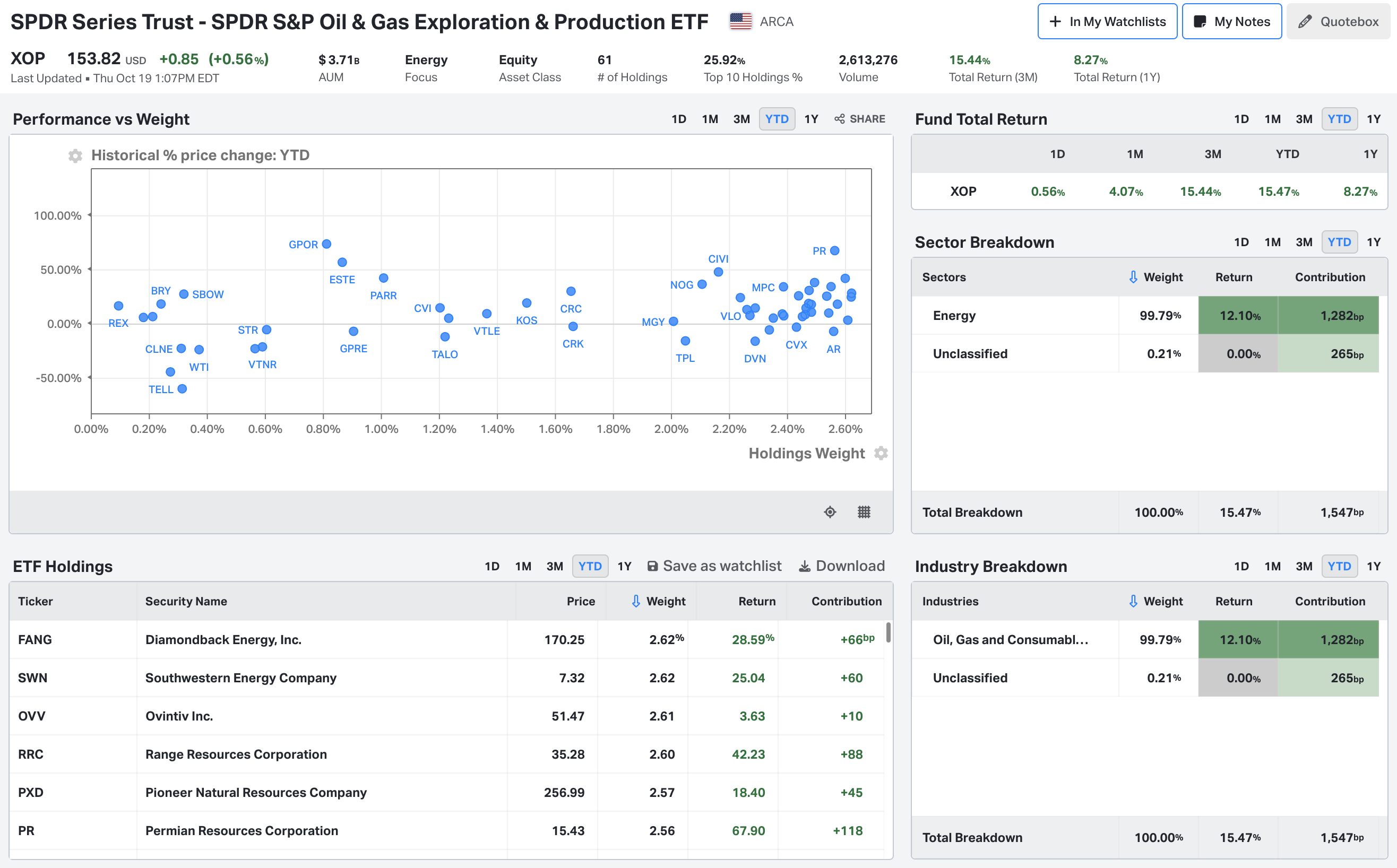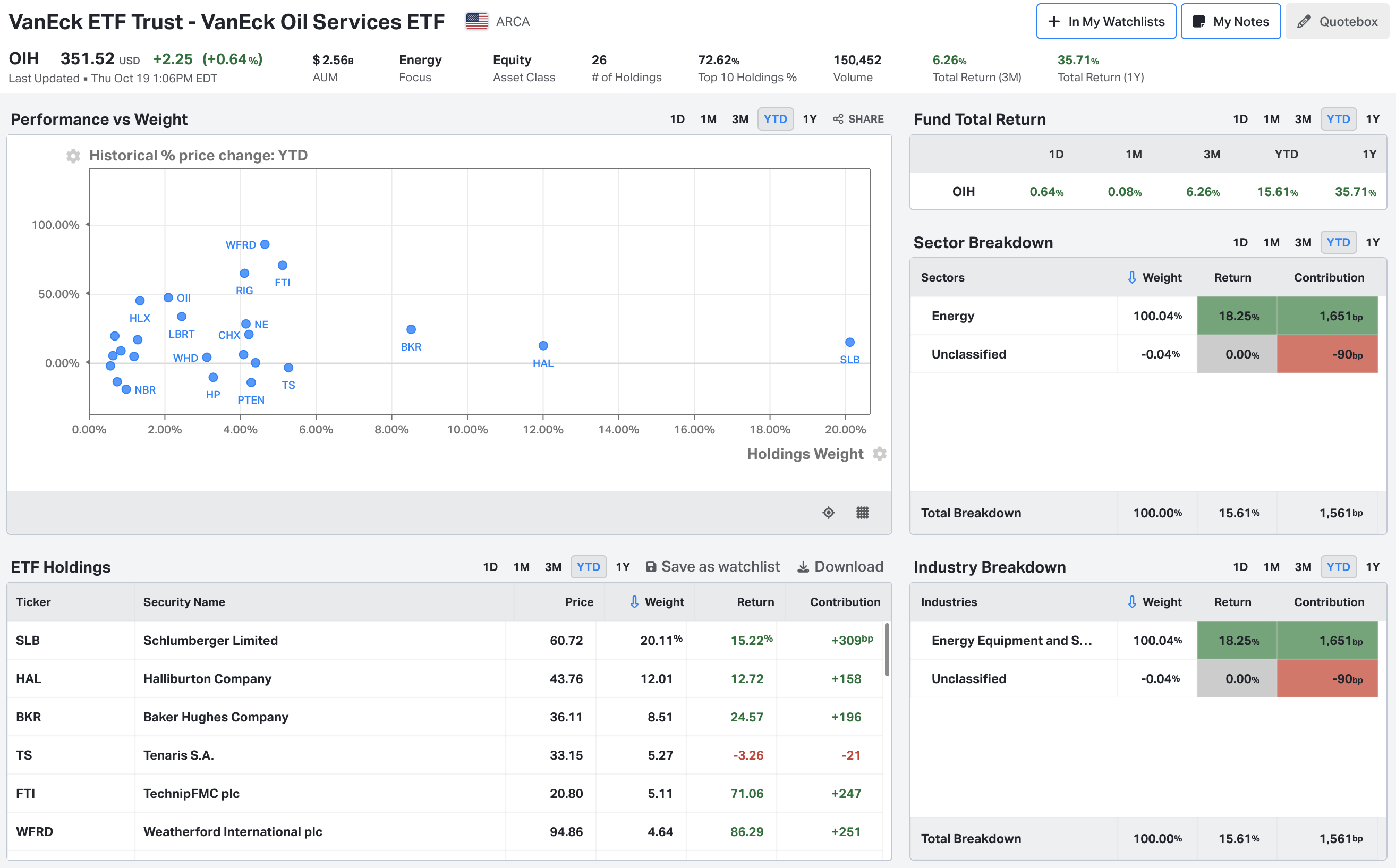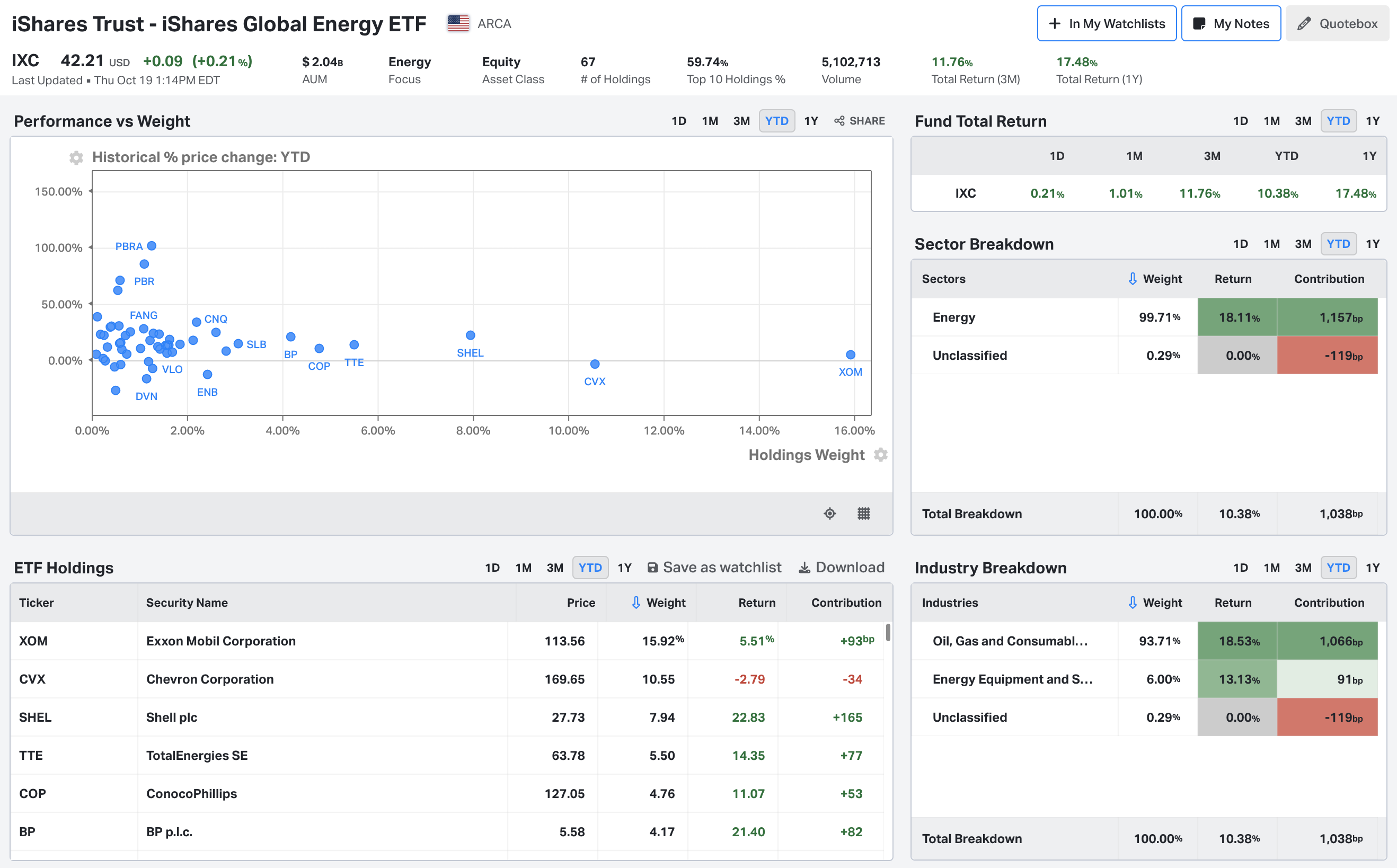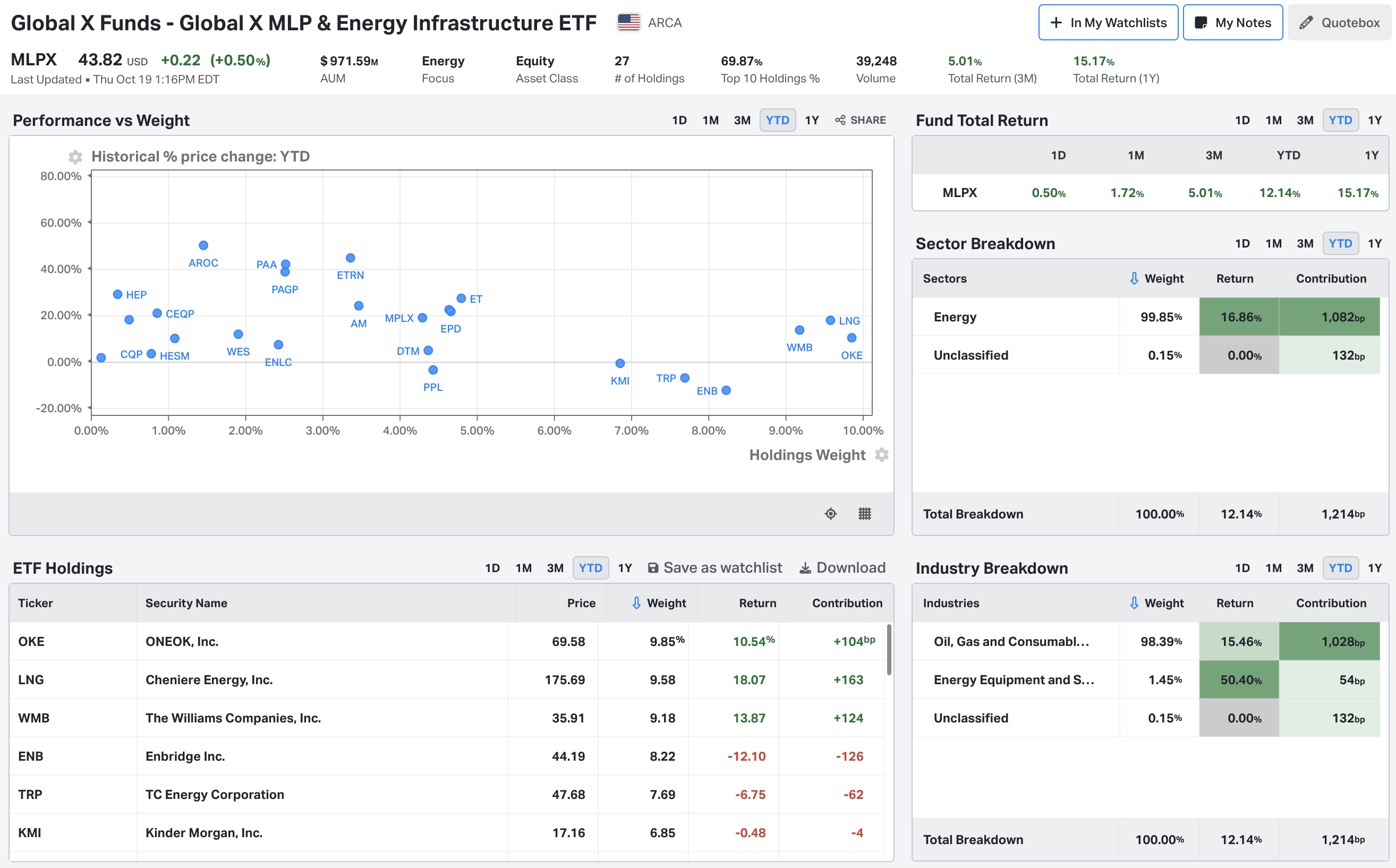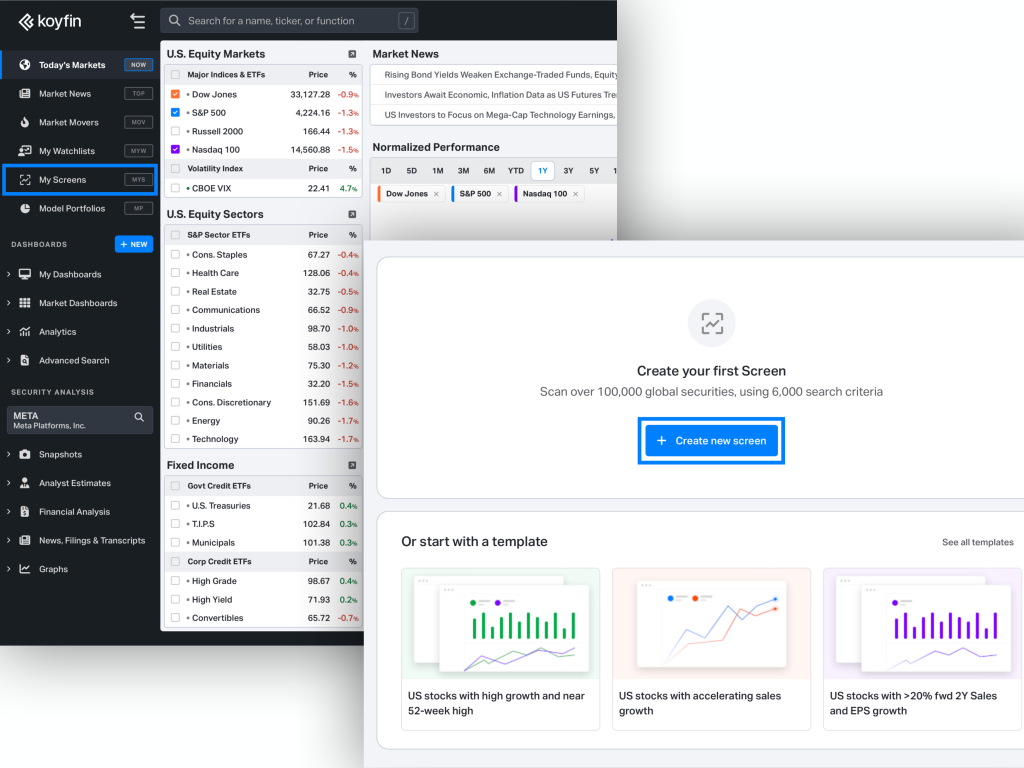7 Best Energy ETFs: Ready to Electrify the Market
Energy stocks go through stages of dramatic underperformance and incredible outperformance. For instance, over the last decade, they have been one of the worst-performing US sectors, but over the past five years, they have been one of the strongest performers. This is, in part, due to their cyclical nature as well as their reliance on a vast array of macroeconomic variables. If you thought predicting stock price movements was difficult, wait until you try to predict long-run macroeconomic developments.
As such, there are periods when energy stocks are in vogue and capital flows aggressively into the sector. As with most themes, there are various different industries and routes an investor can observe to gain exposure within the energy sector. Varieties of energy companies include but are not limited to; renewables, oil and gas exploration, mining, non-renewables, petroleum products and oil, natural gas, gasoline, diesel fuels, solar power, biofuels, and more.
Unless you are well-versed in the energy sector, these ETFs can be suitable vehicles with which to gain exposure to the energy market. Today, we are going to run through some of the best energy ETFs.
Identifying the Best Energy ETFs: Our Strategy
To curate the list of the best ETFs in the energy sector, we used the Koyfin ETF screening tool to search for ETFs with the following criteria:
- US-based: We opted to choose US ETFs for this list.
- Focus: We chose ETFs whose focus is energy or broad energy.
- Non-levered: We exclude all leveraged ETFs.
- Passive: We exclude active funds from our selection.
- Large AUM: All of our selections have a base of AUM that exceeds $950 million.
- Low Expense: Three of our picks have expense ratios under 0.1%, and the rest have ratios between 0.35% and 0.45%,
- Widely Available: There are many funds out there offering exposure to the energy market. We focused on funds that are widely available and are not restricted to certain brokerages, advisors, or pension schemes.
Discover how to find Energy ETFs on your own using a screener at the end of the article!
The 7 Best Energy ETFs
Name | Ticker | Holdings | Dividend Yield | Expense Ratio |
|---|---|---|---|---|
Fidelity MSCI Energy Index ETF | FENY | 128 | 2.98% | 0.08% |
The Energy Select Sector SPDR Fund | XLE | 26 | 3.28% | 0.10% |
Vanguard Energy ETF | VDE | 112 | 3.54% | 0.10% |
SPDR S&P Oil & Gas Exploration & Production ETF | XOP | 61 | 2.53% | 0.35% |
VanEck Oil Services ETF | OIH | 26 | 0.82% | 0.35% |
iShares Global Energy ETF | IXC | 67 | 4.29% | 0.40% |
Global X MLP & Energy Infrastructure ETF | MLPX | 27 | 5.21% | 0.45% |
*Data as of October 19th, 2023
Ready to monitor these funds closely? Keep scrolling to the end of the article to uncover simple tips for creating your own watchlist!
Fidelity MSCI Energy Index ETF (FENY)
Fidelity’s MSCI Energy ETF is the lowest-cost fund on our list, with an expense ratio of just 0.08% and a dividend yield of 2.98%. The fund tracks the MSCI USA IMI Energy 25/50 Linked Index, has an AUM of $1.7 billion, and currently holds 128 energy stocks from across the United States.
The majority of the fund’s industry exposure is held in Oil, Gas, and Consumable Fuels (88%) with the remainder invested in Energy Equipment and Services (12%). The fund’s largest holdings include Exxon Mobil (22%), Chevron (15%), ConocoPhillips (7%), Schlumberger (4%), and EOG Resources (4%).
Key Investment Insights for Fidelity MSCI Energy Index ETF (FENY):
Benchmark:
MSCI USA IMI Energy 25/50 Linked Index
AUM:
$1.7 billion
Number of Holdings:
128
Dividend Yield:
2.98%
Expense Ratio:
0.08%
Top 10 Weight:
65.28%
The Energy Select Sector SPDR Fund (XLE)
XLE is the SPDR Energy Sector ETF and has an expense ratio of 0.1% and a dividend yield of 3.29%. The fund tracks the S&P Energy Select Sector Index and has an AUM of $40.1 billion; by far the largest and most liquid energy ETF on our list. XLE currently holds 26 stocks across the United States, the fewest of our selected funds.
The majority of the fund’s industry exposure is held in Oil, Gas, and Consumable Fuels (90%) with the remainder invested in Energy Equipment and Services (10%). The fund’s largest holdings include Exxon Mobil (22%), Chevron (18%), EOG Resources (5%), ConocoPhillips (5%), and Schlumberger (4%). Because of its fewer holdings, XLE is more top-heavy than FENY, and most other funds on our list, with a top 10 weight of 73%.
Key Investment Insights for The Energy Select Sector SPDR Fund (XLE):
Benchmark:
S&P Energy Select Sector Index
AUM:
$40.1 billion
Number of Holdings:
26
Dividend Yield:
3.29%
Expense Ratio:
0.1%
Top 10 Weight:
72.56%
Vanguard Energy ETF (VDE)
The Vanguard Energy ETF, VDE, has an expense ratio of 0.1% and a dividend yield of 3.55%. The fund tracks the MSCI US Investable Market Energy 25/50 Index and has an AUM of $8.7 billion. VDE currently holds 112 US energy stocks.
The majority of the fund’s industry exposure is held in Oil, Gas, and Consumable Fuels (88%) with the remainder invested in Energy Equipment and Services (12%). The fund’s largest holdings include Exxon Mobil (23%), Chevron (15%), ConocoPhillips (7%), EOG Resources (4%), and Schlumberger (4%).
If you’re interested in Vanguard’s offerings, check out our 10 Best Vanguard ETFs article for more Vanguard ETF options.
Key Investment Insights for Vanguard Energy ETF (VDE):
Benchmark:
MSCI US Investable Market Energy 25/50 Index
AUM:
$8.7 billion
Number of Holdings:
112
Dividend Yield:
3.55%
Expense Ratio:
0.1%
Top 10 Weight:
66.61%
SPDR S&P Oil & Gas Exploration & Production ETF (XOP)
The SPDR S&P Oil & Gas Exploration ETF, XOP, is a slightly more specialized ETF, focused on just one industry. As such, the entirety of the fund’s industry exposure is held in Oil, Gas, and Consumable Fuels. XOP has an expense ratio of 0.35%, a dividend yield of 2.53%, and an AUM of $3.7 billion. The fund tracks the S&P Oil and Gas Exploration & Production Index and holds 61 energy stocks from across the United States.
XOP’s holdings are more equally weighted and less top-heavy than most of our other funds. The fund’s largest holdings include Diamondback Energy (3%), Southwestern Energy Company (3%), Ovintiv (3%), Range Resources (3%), and Pioneer Natural Resources (3%).
Key Investment Insights for SPDR S&P Oil & Gas Exploration & Production ETF (XOP):
Benchmark:
S&P Oil & Gas Exploration & Production Index
AUM:
$3.7 billion
Number of Holdings:
61
Dividend Yield:
2.53%
Expense Ratio:
0.35%
Top 10 Weight:
25.77%
VanEck Oil Services ETF (OIH)
The VanEck Oil Services ETF, OIH, is similar to XOP but instead of being entirely focused on Oil, Gas, and Consumable Fuels, OIH is entirely focused on Energy Equipment and Services. OIH has an expense ratio of 0.35%, a dividend yield of 0.82%, and AUM of $2.7 billion. The fund tracks the Market Vectors US Listed Oil Services 25 Index and holds 26 stocks from across the United States.
The fund’s largest holdings include Schlumberger (20%), Halliburton (12%), Baker Hughes (9%), Tenaris (5%), and TechnipFMC (5%). Because OIH is less exposed to traditional Oil & Gas companies, the dividend yield is lower than most of the funds on our list.
Key Investment Insights for VanEck Oil Services ETF (OIH):
Benchmark:
Market Vectors US Listed Oil Services 25 Index
AUM:
$2.7 billion
Number of Holdings:
26
Dividend Yield:
0.82%
Expense Ratio:
0.35%
Top 10 Weight:
72.77%
iShares Global Energy ETF (IXC)
The iShares Global Energy ETF, IXC, might be suitable for investors seeking international flavor in the energy sector. The fund invests in energy companies across the United States (60%), UK (12%), Canada (11%), France (6%), Brazil (2%), Australia (2%), Italy (2%), Norway (2%) and other countries.
IXC has an expense ratio of 0.40% and offers a dividend yield of 4.29%. The fund tracks the S&P Global 1200 Energy 4.5/22.5/45 Capped Index and has an AUM of $2 billion. IXC currently holds 67 energy stocks across the world. The majority of the fund’s industry exposure is held in Oil, Gas, and Consumable Fuels (94%) with the remainder invested in Energy Equipment and Services (6%). The fund’s largest holdings include Exxon Mobil (16%), Chevron (11%), Shell PLC (8%), Total Energies SE (6%), ConocoPhillips (5%), and BP (4%).
Key Investment Insights for iShares Global Energy ETF (IXC):
Benchmark:
S&P Global 1200 Energy 4.5/22.5/45 Capped Index
AUM:
$2 billion
Number of Holdings:
67
Dividend Yield:
4.29%
Expense Ratio:
0.4%
Top 10 Weight:
59.75%
Global X MLP & Energy Infrastructure ETF (MLPX)
The Global X Energy Infrastructure ETF, MLPX, has an expense ratio of 0.45% and a dividend yield of 5.21%; both of which are the highest on our list. The fund tracks the Solactive MLP & Energy Infrastructure Index and has an AUM of $971.6 million; the smallest fund on our list. MLPX currently holds 27 stocks across the United States.
The majority of the fund’s industry exposure is held in Oil, Gas, and Consumable Fuels (98%) with the remainder invested in Energy Equipment and Services (2%). The fund’s largest holdings include ONEOK (10%), Cheniere Energy (10%), The Williams Companies (9%), Enbridge (8%), and TC Energy (8%).
Key Investment Insights for Global X MLP & Energy Infrastructure ETF (MLPX):
Benchmark:
Solactive MLP & Energy Infrastructure Index
AUM:
$971.6 million
Number of Holdings:
27
Dividend Yield:
5.21%
Expense Ratio:
0.45%
Top 10 Weight:
70%
How to Create a Watchlist for Top Energy ETFs
Step 1: Sign Up to Koyfin for Free. Register an account and get started; no credit card required.
Step 2: Create a Watchlist. Head to ‘My Watchlists’, create a new watchlist and give it a name.
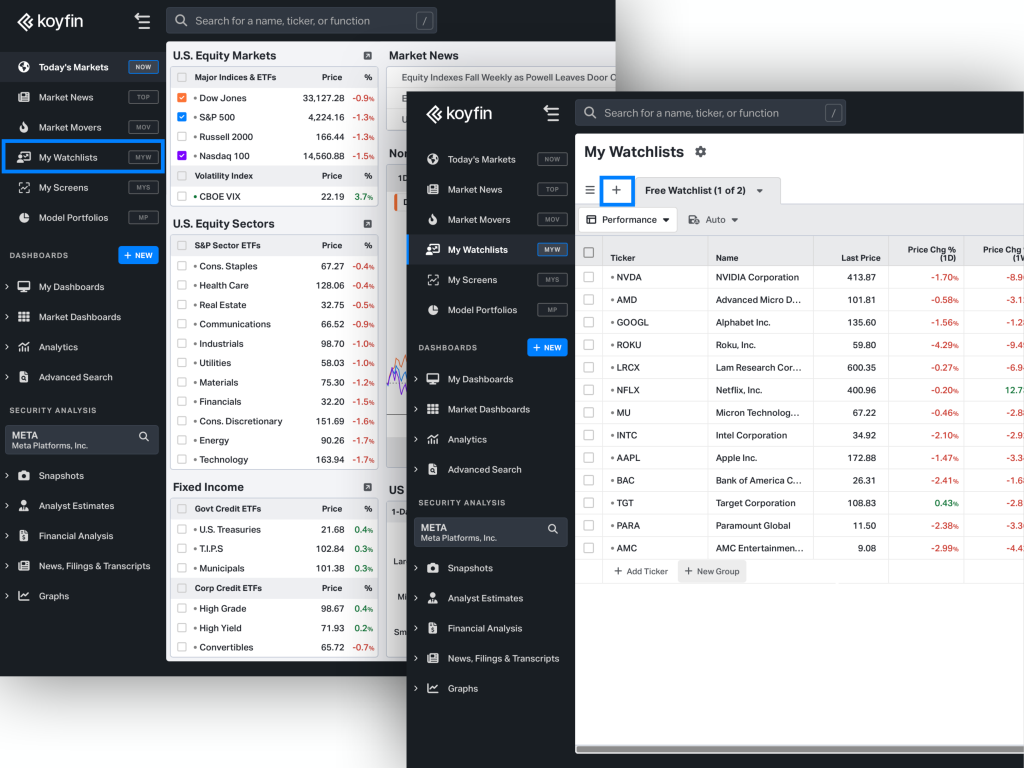
Step 3: Add Tickers. Click ‘Add Ticker’, then ‘Import Securities’, then copy and paste the below list of tickers.
FENY, XLE, VDE, XOP, OIH, IXC, MLPX

Step 4: Customize Columns. Hit the ‘Columns’ icon to add and remove columns from your watchlist table.
We have thousands of data points you can add to a watchlist, including: fundamental data, price and returns data, analyst estimates, percentile ranks, security information, portfolio tools, and the ability to create your own formulas and labels.
Now your watchlist is ready, and you can use the rest of the Koyfin terminal to track and analyze these ETFs.
